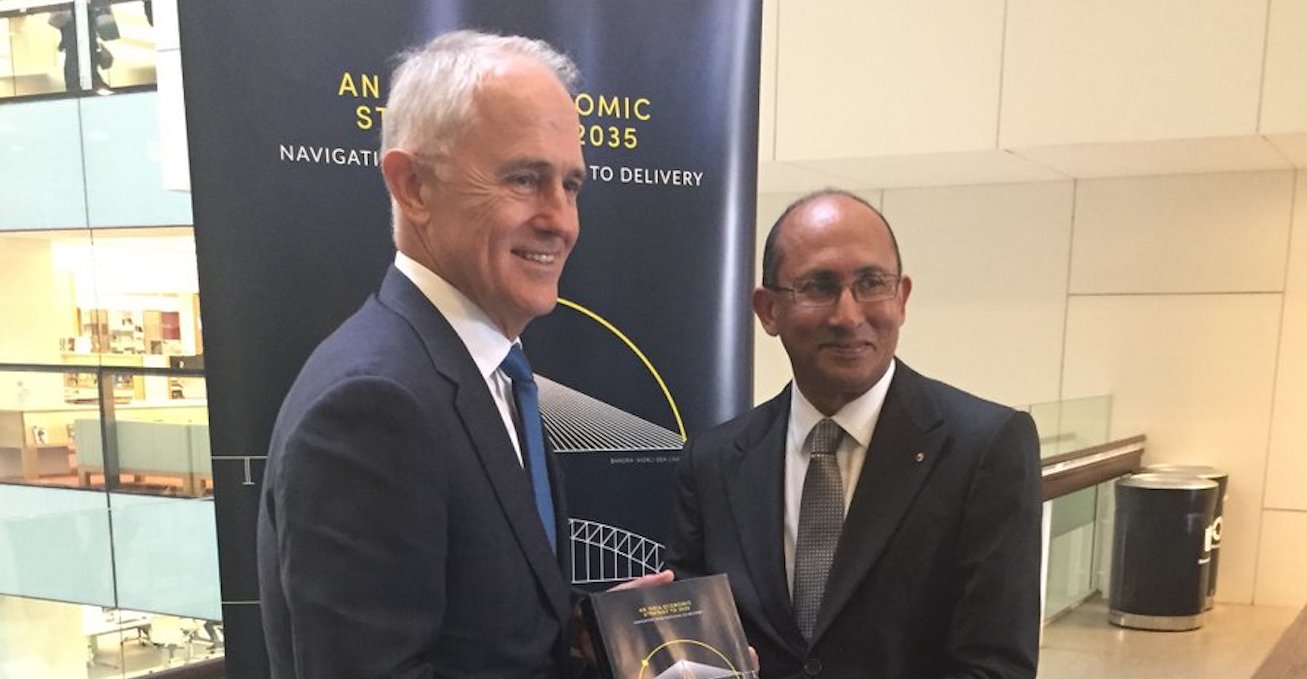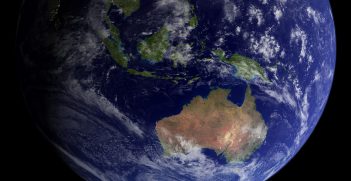Towards an India-Australia Strategic Partnership

India-Australia strategic ties have been characterised by indifference rather than convergence. Since the turn of the century, both nations have reoriented their outlooks and initiated proactive strategic engagements.
India and Australia held their second 2+2 Foreign and Defence Secretaries’ Dialogue in Canberra on 10 October. This followed a meeting of foreign ministry officials for Australia-India-Japan-United States consultations (the Quad) in Singapore on 7 June.
Why is the revival of the Quad important? And what is the trajectory of India-Australia bilateral relations in the light of the growing geopolitical importance of the Indo-Pacific?
With two decades of India’s “Look East” policy now being replaced with “Act East” by the Modi Government, India is clearly seeking to bring about a balance of power in Asia by addressing China’s assertiveness in the region. Australia, as a key player in the Indo-Pacific, is central to India’s expanding geographic focus.
India-Australia relations: trends and prospects
India and Australia have built strategic trust over the years, slowly yet steadily. A reference point in this transition is in civil nuclear co-operation between the two countries. Thirty years ago, observers marked one of the lowest points of bilateral relations between the two countries, the Australian Government condemned India’s 1998 nuclear test as “outrageous’”. Come 2014, Australia signed uranium supply deal with India, the first of its kind with a country that is a non-signatory of nuclear non-proliferation treaty, in recognition of India’s “impeccable” non-proliferation record.
Australia’s 2017 Foreign Policy White Paper recognises India as of first order importance to Australia both in terms of bilateral partnership as well as its role in shaping the regional order. Meanwhile, the Australian Government’s commissioning of a landmark national economic strategy for India, written by former secretary of the Department of Foreign Affairs and Trade Peter Varghese AO FAIIA – An India Economic Strategy to 2035 – shows Australia’s willingness to work with India as a priority economic partner.
Security ties between India and Australia seem to be on an upward trajectory since the signing of a Framework for Security Cooperation by Prime Ministers Narendra Modi and Tony Abbott in 2014. Several high level meetings and joint bilateral and multilateral exercises like Kakadu (August-September 2018), AUSINDEX 15 (July 2018) and the Black Carillon submarine rescue exercise (November 2018) have ended the year on a positive note. Combined efforts should be made to enhance maritime surveillance, monitoring and patrolling in the region as well as joint training and co-operation in counter-terrorism and transnational crimes.
Economically, there are huge complementarities in the Indian and Australian markets. India is a very stable democratic regime which rules out the possibility of political uncertainties. Recent years have witnessed remarkable growth in trade between the two nations. In 2018, the Indian Government took steps to ease and liberalise its foreign direct investment policy and rules. With the Indian Government now simplifying the tax regime through the introduction of goods and services tax and focusing on innovation-based initiatives, the market environment in India is very favorable for Australia to engage.
An India Economic Strategy to 2035 identifies health, education and tourism as areas in which Australia has comparative advantage. India will have the largest working population in the world by 2027. Over the next two decades India will need to upskill 400 million people. Australia is well-equipped to assist with this huge need for knowledge-sharing, education and skill development. This should lead to collaborations in science and technology and innovation. Information technology is a major area with huge scope for collaboration, with India being a global leader in IT and Australia wanting to be at the cutting edge of IT development and application.
There is great scope for regional economic integration in the Indo-Pacific, one of the most flourishing trade zones in the world. The Regional Comprehensive Economic Partnership (RCEP) is a good platform for India to work towards the goal of regional economic development, since India is not yet a part of the Trans-Pacific Partnership (TPP-11 or CPTPP). Trilateral engagements with crucial nations like Indonesia and Japan and deeper engagement in fora for regional co-operation like the Indian Ocean Rim Association and East Asia Summit will also strengthen the ties between India and Australia.
In addition to the huge unexplored scope for economic co-operation, the two countries also have enormous potential to build on their people-to-people links and thus their soft power influence. India is the third largest source of immigrants to Australia and the second largest source of skilled professionals. This should give impetus to build public understanding of each other and thus improve public policy.
Resurrecting the Quad
It is in the light of this growing convergence that the Quad meeting in Singapore becomes relevant. The 7th June Quad meeting reiterated a joint commitment to a “rules-based” regional order.
It is clear that avoiding collective security arrangements to satisfy Chinese sensitivities will not stop China from being assertive in the Indo-Pacific region. It is important that Australia, like other countries with decision-making capacity in the region, guide its choices to meet its own strategic concerns.
Stronger ties with India will give Australia expanded room for strategic manoeuvring both regionally and globally. Australia has too many eggs in the China basket. Engaging more proactively with the fast-growing Indian market will help Australia to diversify its risk.
In conclusion, there is a need to identify areas of trust-building to make the relationship between the two nations stronger. The bilateral relationship definitely does not arise from relying on the other as a security provider or a military counter to China’s rise. It should be characterised by cooperation that addresses concerns such as unemployment and poverty and is rooted in promotion and sharing of skills and sustainable development in a stable and rules-based Indo-Pacific. “Ambitious yet realistic” should be the aim for India-Australia ties in the coming years.
Pravda Parakkal is a published researcher in the field of international relations and geopolitics, working currently as a terrorism analyst with the Jane’s Terrorism and Insurgency Center.
This article is published under a Creative Commons Licence and may be republished with attribution.





